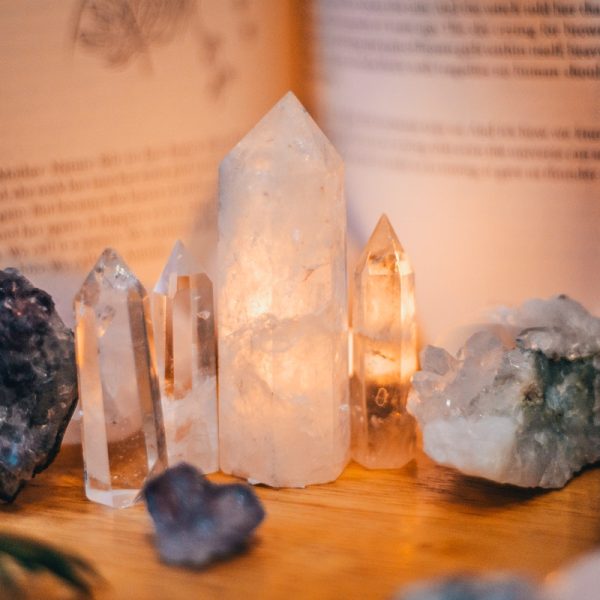Welcome to the world of color, where creativity meets science! Mixing and matching colors is a fundamental skill for anyone who wants to create art. Color mixing for artists is not just about achieving the desired shade; it’s about understanding how different hues interact and the emotions they can evoke in a piece of art. The color wheel is a visual representation of the relationships between different colors.
Mastery of the color wheel and the principles of color mixing can elevate your artwork, giving it depth, harmony, and a professional finish. The appeal of creating vibrant and harmonious artworks has led many artists, both beginners and professionals, to dive deep into the world of color theory. So, this guide will demystify the color wheel and introduce you to the basics of color mixing. Let’s dive in and add some color to your artistic journey!
Section 1: What Is the Color Wheel?
The Concept of the Color Wheel
The color wheel, at its most basic, is a circular diagram representing the colors of the visible light spectrum. The wheel is typically organized with primary colors (red, blue, and yellow) spaced evenly apart, surrounded by secondary colors (green, orange, and purple) created by mixing the primary colors, and finally, the tertiary colors, made by mixing primary and secondary colors. This simple tool visually represents color relationships and helps artists predict the results of color mixing.
Understanding Color Relationships
The arrangement of colors on the color wheel isn’t arbitrary. It’s a thoughtful organization that reveals relationships between different hues. Adjacent colors on the wheel, known as analogous colors, can create harmonious designs due to their similar color characteristics. On the other hand, colors directly opposite each other on the wheel, called complementary colors, provide a stark contrast when placed side by side, creating a vibrant look.
History of the Color Wheel
The origins of the color wheel date back to Sir Isaac Newton’s experiments with prisms in the 17th century. Newton observed that when a beam of white light passed through a prism, it dispersed into a range of colors, which he organized in a circular diagram. However, it was not until the 18th century when painter and color theorist Moses Harris developed the first color wheel for artists, incorporating secondary and tertiary hues.
Moses Harris’ color wheel proved to be a significant milestone in the progress of understanding color theory, but the development of the color wheel didn’t stop there. Throughout the 19th and 20th centuries, artists, scientists, and educators continued to refine the color wheel concept. Noteworthy among these was Albert H. Munsell, an American painter and teacher known for creating the Munsell Color System. This system expanded upon the basic color wheel by introducing the concepts of color value and chroma, thus providing a more comprehensive and precise way for artists to talk about and use color.
During the same period, Johannes Itten, a Swiss painter and teacher at the Bauhaus design school, also significantly contributed to the color theory field. Itten’s color wheel included 12 hues, with primary, secondary, and tertiary colors. He also introduced the notion of warm and cool colors and the psychological implications of colors. Itten’s color wheel remains influential today, particularly in the fields of design and art education.
Thus, the color wheel, as we understand it today, is the result of centuries of exploration and refinement shaped by the contributions of several innovative minds. Each iteration has added depth and nuance to our understanding of color and its application in art and design. The color wheel continues to be a critical tool, guiding artists’ decisions and enabling them to create visually impactful and emotionally resonant works of art.
Significance of the Color Wheel in the Art World
The color wheel has immense significance in the world of art. It assists artists in understanding the relationships and interactions between different colors. It helps create a color scheme for a piece of artwork, understand color harmony, and subtly convey emotions through color. The color wheel is also a tool for understanding the concept of complementary colors, which are colors directly opposite each other on the wheel. When placed side by side in a work of art, complementary colors make each other appear brighter and more vibrant.
Overall, the color wheel is an essential tool, guiding artists to create balanced and visually engaging art pieces. Many artists have used the color wheel as a starting point for their creative process, while others use it more intuitively. Whatever method you choose, the color wheel is an indispensable resource that can help elevate your artwork and guide you toward mastering the art of color mixing.
Section 2: Primary, Secondary, and Tertiary Colors
As mentioned earlier, the color wheel is divided into three categories: primary, secondary, and tertiary colors. Let’s take a closer look at each of them.
Primary Colors
Primary colors are the foundation of all other colors and cannot be created by mixing any other hues. In the traditional color model, these are red, blue, and yellow. These colors are equally spaced on the color wheel and form a triangle. The primary colors serve as the origin points, which, when mixed in different combinations, give rise to all other colors on the wheel.
These colors are essential to the color-mixing process, as all other hues can be created by mixing them in different proportions. Understanding the primary colors and their interaction is crucial to mastering color mixing.
Secondary Colors
Secondary colors are derived by mixing two primary colors. They are orange (red + yellow), green (yellow + blue), and purple (blue + red). On the color wheel, these secondary colors are positioned halfway between the primary colors they are made from. They continue the circular progression of hues on the wheel, filling the space between the primary colors and thereby expanding the spectrum of achievable colors.
As mentioned earlier, secondary colors harmonize with their adjacent primary colors on the color wheel. Because of this relationship, they are often used together in artworks to create a sense of balance and unity.
Tertiary Colors
Tertiary colors are created by mixing a primary color with an adjacent secondary color. These include red-orange, yellow-green, blue-green, red-violet, yellow-orange, and blue-violet. These colors add complexity to the color wheel, bridging the gap between primary and secondary colors and fulfilling the entire color spectrum.
No matter how complex an artwork’s color palette may be, all its hues can ultimately be traced back to the primary and secondary colors on the wheel. Hence, understanding the relationships between tertiary colors and their parent colors is essential for artists looking to create intricate and impactful pieces.
Section 3: Color Harmonies and Schemes
Complementary Colors
Complementary colors are pairs of colors directly opposite each other on the color wheel. This positioning means that each color in the pair brings out the most contrast in its counterpart, making them ‘complement’ each other. The most basic complementary pairs are red and green, blue and orange, and yellow and purple. Using complementary colors can create a striking, high-contrast effect in your artwork. However, it’s essential to handle these pairs with care. When placed side by side, they create a vibrant look especially when used at full saturation. But when mixed, they can neutralize each other, leading to a dull, muddy color.
Analogous Colors
Analogous colors are groups of three colors next to each other on the color wheel, sharing a common color, with one being the dominant color, which tends to be a primary or secondary color and a tertiary. For example, red, red-orange, and orange are analogous colors. These color schemes are often found in nature and are harmonious and pleasing to the eye because they have a certain commonality while maintaining a degree of variety. Analogous color schemes are often used to create a sense of calm and continuity. For best results, it’s recommended to avoid combining warm and cool colors in an analogous scheme, as this can create discord in your design.
Triadic Colors
Triadic colors are sets of three colors evenly spaced out on the color wheel. This means they form a perfect triangle when you draw lines connecting them on the wheel. The primary colors (red, blue, and yellow) perfectly exemplify a triadic scheme. Other triadic combinations include secondary colors and various combinations of tertiary colors. A triadic color scheme is more vibrant and provides higher contrast than analogous colors, but they are more balanced and harmonious compared to complementary colors. When using a triadic harmony, it’s a good practice to let one color dominate and use the other two for accent.
Practical Applications of Color Schemes in Art
Understanding the different color schemes and their effects can significantly enhance an artist’s ability to create impactful and balanced artwork. Here are some practical examples and tips on how you can use these color schemes effectively:
Complementary Colors: A great example of using complementary colors in art is Vincent van Gogh’s famous painting ‘Starry Night.’ The vibrant yellows of the stars and moon stand out against the deep blues of the night sky, creating a vivid contrast and high visual interest. When using complementary colors in your artwork, remember to balance them carefully. One color should usually dominate, with the complementary color used to draw attention to key elements and create vibrant accents.
Analogous Colors: The ‘Haystacks‘ series by Claude Monet provides excellent examples of analogous color schemes. Monet uses various shades of blues and violets to create the tranquil mood of the early morning or late evening light. When you use analogous colors in your own artwork, try to avoid using colors that are too similar, as this can make your artwork appear monotonous. Instead, use a range of light and dark tones within your chosen color spectrum to add depth and interest.
Triadic Colors: Pablo Picasso’s ‘Three Musicians‘ is a fantastic example of a triadic color scheme. It uses the primary colors – red, yellow, and blue – to create a vibrant, almost playful effect. When using a triadic color scheme in your own artwork, make sure to balance the colors carefully. Choose one dominant color while the other two serve as accents. This will help you maintain harmony and balance in your artwork.
Choosing a color scheme can significantly impact your artwork depending on the emotion or mood you want to convey. Whether you’re looking for high contrast, harmony, or balance in your design, understanding how to use different color combinations will help you create impactful and visually engaging art pieces.
Section 4: Color Mixing Techniques
Now that we have a better understanding of color relationships and schemes, let’s look at some techniques for mixing colors.
Additive Color Mixing
Additive color mixing is the process that involves mixing lights of different wavelengths to create new colors. This type of color mixing is called ‘additive’ because the more light you add, the closer the color gets to white. The primary colors used in additive color mixing are red, green, and blue. When red and green light combine, the result is yellow. Blue and green light create cyan, and red and blue light produce magenta. When red, green, and blue light are all combined, the result is white light. This concept is widely used in digital media and lighting, where color is produced by blending light emitted from a source.
Subtractive Color Mixing
Subtractive color mixing involves the absorption and reflection of light. The name ‘subtractive’ comes from the fact that you subtract colors from white light to create other colors. The primary colors used in subtractive color mixing are cyan, magenta, and yellow – the color model used in print. When you mix cyan and magenta, you get blue. Mixing magenta and yellow produces red, and combining yellow and cyan produces green. When you mix all three primary colors (cyan, magenta, and yellow), theoretically, it should produce black, but in practice, it often creates a muddy brown or a dark gray. For this reason, black (K) is usually added as a fourth color in printing, hence the CMYK model – Cyan, Magenta, Yellow, and Key (Black).
Direct Color Mixing
Direct color mixing involves mixing colors directly on the palette before applying them to the artwork. This technique allows artists to create a range of hues, tones, and shades, providing complete control over the color outcome. It’s important to remember that different colors have different strengths, so the volume of each color needed in the mix will vary.
Optical Color Mixing
Optical color mixing or glazing involves layering thin, transparent layers of different colors on the canvas. When viewed from a distance, these colors only appear to mix visually, creating a new hue. This technique can create a luminous effect as the layers of paint allow more light to reflect off the canvas, adding depth and complexity to the colors in the artwork.
Wet-on-Wet Color Mixing
Wet-on-wet color mixing, or alla prima, is a technique where a new color is added before the previous layer of paint has dried. The colors mix naturally on the canvas as they are worked together. This technique creates a fluid, cohesive effect in the artwork, often used in oil and watercolor painting.
Tonal Gradation
Tonal gradation is a technique where colors are mixed to create a range of tonal values. This method is particularly useful for creating realistic, three-dimensional forms in artwork. By gradually adding white to lighten a color or black to darken it, artists can create a smooth transition from light to dark, adding volume and depth to their artwork.
These are just some of the many color-mixing techniques artists use to create a wide range of colors and effects in their artwork. The key is experimenting with different methods and finding what works best for your unique style and artistic vision.
Conclusion
In conclusion, understanding color theory, the color wheel, and how to mix colors is essential for creating visually appealing artwork. By familiarizing yourself with primary, secondary, and tertiary colors and how they interact, as well as different color schemes and mixing techniques, you can elevate your artwork to new heights.
Remember to use the color wheel as a guide, but also allow for your own intuition and creativity in the color mixing process. With practice, you will gain a better understanding of how to use colors effectively in your artwork and create pieces that are not only visually striking but also emotionally impactful. Happy color mixing!




